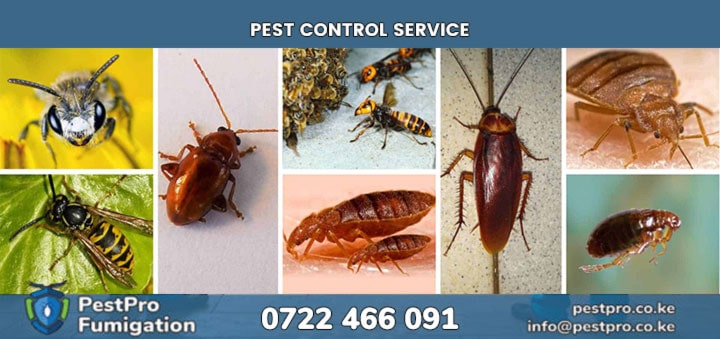Pests can disrupt homes, gardens, and businesses, causing damage and health concerns. Fortunately, eco-friendly pest prevention methods offer sustainable solutions that minimize environmental harm while effectively managing pest populations. These methods prioritize natural, non-toxic approaches, ensuring safety for humans, pets, and ecosystems. This article explores practical and environmentally conscious strategies to prevent pest infestations.
Understanding Common Pests and Their Impact
Before implementing pest prevention methods, it’s essential to understand the types of pests that may invade your space. Common household pests include ants, cockroaches, rodents, and termites, while garden pests often consist of aphids, slugs, and beetles. Each pest has unique behaviors and vulnerabilities, making targeted prevention critical.
Eco-friendly pest control focuses on disrupting pest life cycles without relying on harmful chemicals. By addressing the root causes of infestations, such as food sources or entry points, you can create an inhospitable environment for pests. This proactive approach reduces the need for reactive measures and promotes long-term sustainability.
"Integrated Pest Management (IPM) reduces pesticide use by up to 50% in some agricultural settings, proving that eco-friendly methods can be highly effective." – United States Environmental Protection Agency
Sealing Entry Points to Deter Pests
One of the most effective eco-friendly pest prevention strategies is sealing entry points. Pests often enter homes through small cracks, gaps, or unsealed doors and windows. Conduct a thorough inspection of your property to identify vulnerabilities. Use caulk to seal cracks in walls, install weatherstripping around doors and windows, and repair damaged screens.
For outdoor areas, ensure that fences and gates are secure to prevent larger pests like rodents from entering. Regularly check for gaps around utility lines or pipes, as these are common entry points for insects and small mammals. By fortifying your property, you create a physical barrier that discourages pests without harming the environment.
"A single mouse can fit through a hole the size of a dime, making regular inspections critical for pest prevention." – National Pest Management Association
Natural Repellents for Pest Control
Natural repellents are a cornerstone of eco-friendly pest prevention. Essential oils such as peppermint, eucalyptus, and lavender are known to deter insects like ants, mosquitoes, and spiders. Mix 10-15 drops of essential oil with water in a spray bottle and apply to areas where pests are active. Reapply every few days for consistent results.
Diatomaceous earth, a non-toxic powder made from fossilized algae, is another powerful tool. Sprinkle it in areas where pests travel, such as baseboards or garden beds. The powder dehydrates insects upon contact, making it an effective yet safe option. Always choose food-grade diatomaceous earth to ensure safety around pets and children.
"Peppermint oil can reduce spider populations by up to 90% when applied consistently in affected areas." – Journal of Economic Entomology
Maintaining a Clean and Tidy Environment
A clean environment is less attractive to pests. Regularly clean kitchens, dining areas, and storage spaces to eliminate food crumbs and spills. Store food in airtight containers and avoid leaving pet food out overnight. Take out the trash frequently and use bins with tight-fitting lids to prevent attracting rodents and insects.
In gardens, remove debris such as fallen leaves or rotting wood, which can serve as breeding grounds for pests. Composting is eco-friendly but ensure compost bins are secure and located away from your home to avoid attracting unwanted visitors. A tidy space reduces the resources pests need to thrive.
"Proper sanitation can reduce pest infestations by up to 80% in urban environments." – Centers for Disease Control and Prevention
Encouraging Natural Predators
Introducing or attracting natural predators is a sustainable way to control pest populations. For example, ladybugs and lacewings feed on aphids, while birds like sparrows consume beetles and caterpillars. Install birdhouses or plant native flowers to attract these beneficial species to your garden.
In indoor settings, consider biological controls like nematodes, microscopic worms that target soil-dwelling pests without harming plants or humans. By fostering a balanced ecosystem, you can naturally reduce pest numbers while supporting biodiversity.
"A single ladybug can consume up to 5,000 aphids in its lifetime, making it a powerful ally in pest control." – University of California Agriculture and Natural Resources
Using Traps and Barriers Wisely
Eco-friendly traps and barriers offer non-toxic solutions for pest management. Sticky traps can capture crawling insects like cockroaches, while pheromone traps attract and trap specific pests without chemicals. Place traps in high-traffic pest areas but check them regularly to maintain effectiveness.
Physical barriers, such as row covers in gardens, protect plants from pests like caterpillars and beetles. Copper tape around plant stems deters slugs and snails, as they avoid crossing the metal. These methods are safe, reusable, and environmentally friendly.
"Pheromone traps can reduce moth populations by up to 70% in controlled environments." – Pest Control Technology Magazine
Regular Monitoring and Maintenance
Ongoing vigilance is key to eco-friendly pest prevention. Schedule regular inspections of your home and garden to detect early signs of pest activity, such as droppings, chewed materials, or damaged plants. Early intervention prevents small issues from becoming major infestations.
Maintain your property by trimming overgrown vegetation, repairing leaks, and removing standing water, which attracts mosquitoes. By staying proactive, you can address vulnerabilities before pests exploit them, ensuring a pest-free environment without relying on harmful chemicals.
"Regular monitoring can detect pest issues 90% faster than waiting for visible signs of infestation." – World Health Organization
By adopting these eco-friendly pest prevention methods, you can protect your home and garden while safeguarding the environment. Sealing entry points, using natural repellents, maintaining cleanliness, encouraging predators, employing traps, and monitoring regularly create a comprehensive strategy that minimizes pest risks sustainably. These practices not only reduce reliance on chemical pesticides but also promote a healthier ecosystem for future generations.
More pest Control ServicesPestPro Facebook Page
Medium
